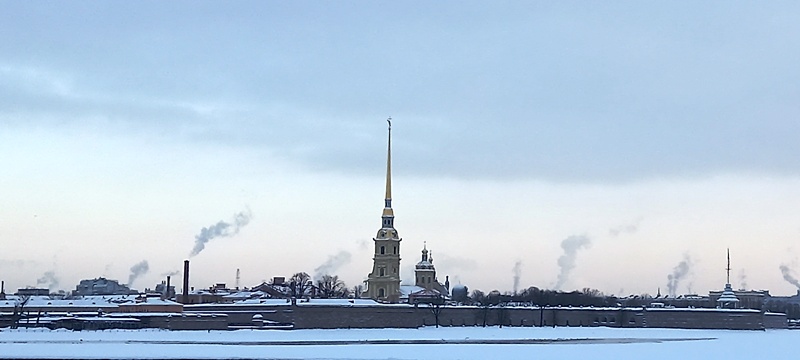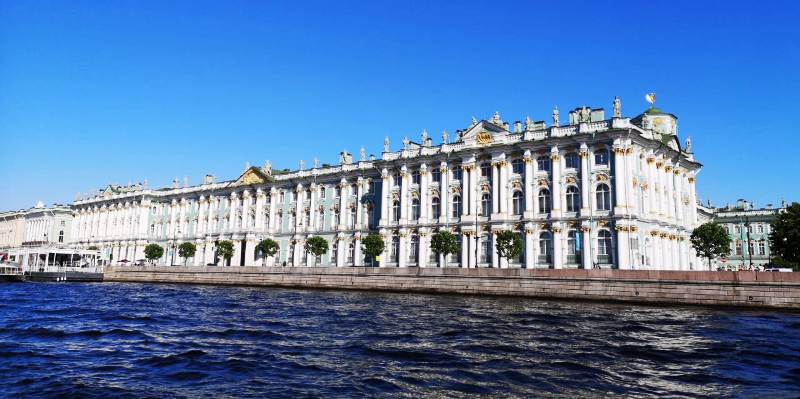Main page Tours and offers Visa-free tours About Saint-Petersburg Contacts
N.B. Please find actual information about my tours on my new web-site Your guide in St Petersburg!
Saint-Petersburg
Saint Petersburg, the second largest city in Russia, is located on the banks of the Neva river at the head of the Gulf of Finland of the Baltic Sea. Its square is about 600 square kilometers and the population is 5mln people. 93 water ways, including small tributaries of the Neva river and man-made canals, split the city into 44 islands, connected by 400 bridges.

St.-Petersburg has a combination of marine and continental climate. It has long cold winter and short wet summer. Winter lasts from November till March. Most rivers and canals freeze at that time. Summer starts in June , the hottest month is July with average temperature 22º.There are 191 rainy days in the city and the average annual rainfall is 620 mm. St.-Petersburg is rather gloomy city : we have only 62 sunny days and 157 days without frost.The most charming period starts on the 25th of May and lasts till the 17th of July. The time is known as White Nights. It is a curious phenomenon caused by St. Petersburg's very northerly geographical location - at 59 degrees 57' North (roughly on the same latitude as Oslo, Norway, the southern tip of Greenland and Seward, Alaska) it stands at such a high latitude that the sun does not descend below the horizon enough for the sky to grow dark. In fact night becomes curiously indistinguishable from day.
Only in St.-Petersburg White Nights have received such poetic and literary acclaim. What could be more romantic than a walk along the banks of the city's rivers and canals in almost broad daylight, no matter what the time of day? No other major European city can rival this experience or the atmosphere on the streets of St. Petersburg during the summer months - lively, friendly, romantic and bustling with people throughout the night as well as the day!
Saint Petersburg is the most “western” city in Russia, the major European cultural centre and the most important Russian sea-port. Saint Petersburg is the northernmost city in the world with the population over one million people. The Historical Centre of Saint Petersburg and Related Group of Monuments constitute a UNESCO World Heritage Site. Saint Petersburg is also the home of the Hermitage museum - one of the biggest museums in the world.

The history of the foundation of Saint Petersburg is really interesting. In 1700 young tsar Peter the I waged a war against Sweden in order to get back ancient Russian lands and obtain the access to the Baltic sea. That Russo-Swedish war is known as the Nothern War, which lasted 21 year from 1700-1721. On the 27th of May 1703 close to the estuary (of about 5 km (or 3 miles) from the gulf), on Hare’s Island, Peter laid down the Fortress which was the first construction of the city. The fortress was called “Sankt- Petersburg” which means “The city of saint Peter” in German.
Saint-Petersburg grew rapidly due to the foreign specialists, invited by Russian tsar. Very soon it became cultural, scientific and industrial centre of Russia. In 1712 Peter moved the capital from Moscow to Saint Petersburg, and until 1918 it had been the capital of Russia, except 1728-1732, when the capital was moved to Moscow. After the death of Peter I (1725) his successors also contributed to the grandeur of our city. St.-Petersburg reached its prime in the time of Catherine II. It witnessed 3 revolutions and experienced horrible Seige of 1941-1944 but has never been invaded .
The city changed its name 4 times. In 1914 St-Petersburg was renamed Petrograd, as there was the First World War against Germany and Russian patriots didn’t want there capital to bear German name, in 1924 the name of the city was changed to Leningrad in honor of Vladimir Lenin who died that year. During the Second World War Leningrad was besieged by Nazi and its siege lasted 872 days from September 1941 to January 1944. After the war Leningrad was awarded the title of a “Hero-city”; in 1991 the city got back its historical name Saint Petersburg.





